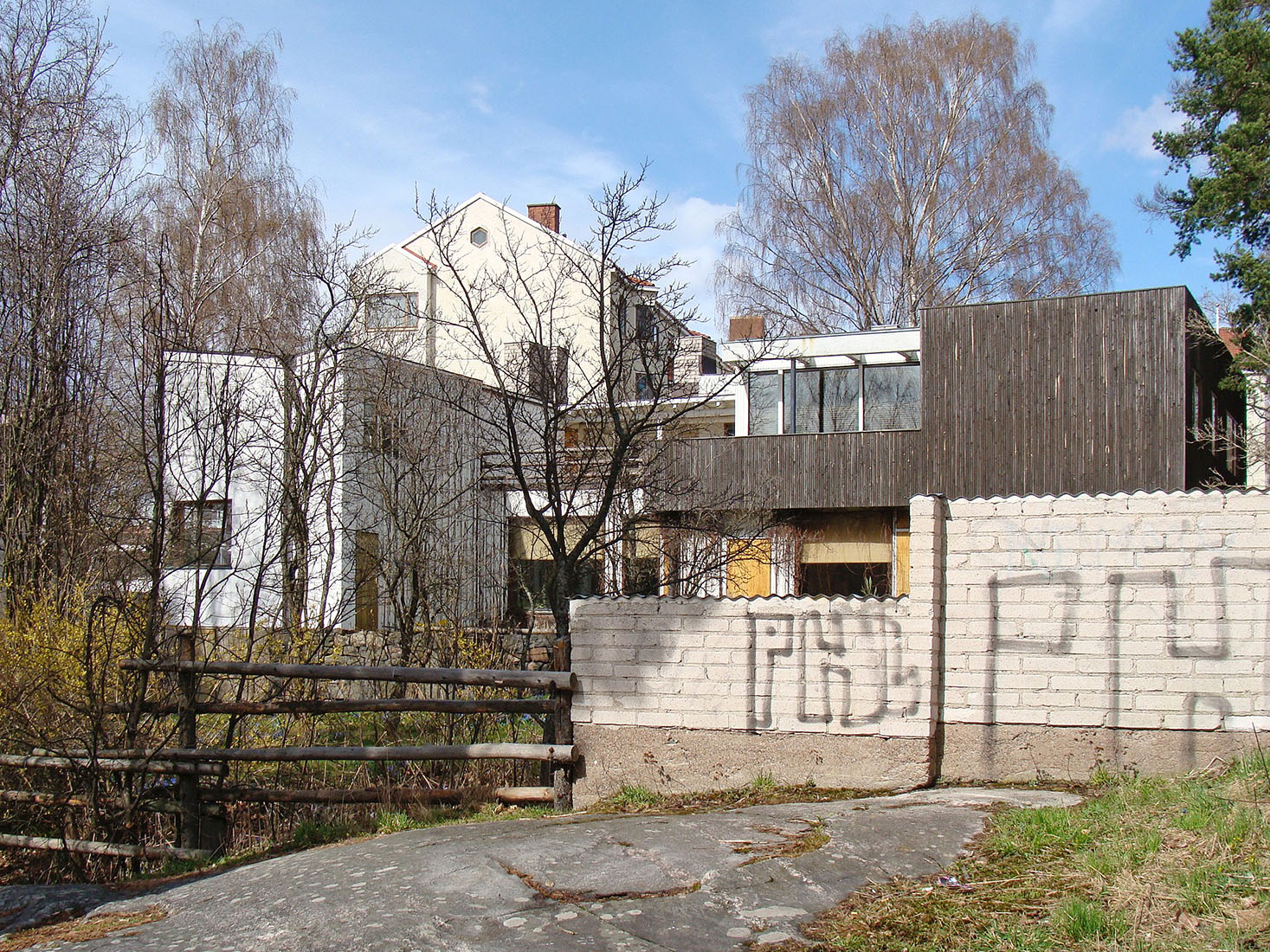 |
 |
 |
 |


Alvar Aalto House
Riihitie 20, Helsinki
1934 - 1936
In 1933 Alvar Aalto returned to Helsinki with his family. The following year, Aino and Alvar Aalto acquired a site at Riihitie in Helsinki's Munkkiniemi district, within surroudings almost completely untouched at this time. They designed their own house, conceived both as a family home and an office, which was completed in August 1936. The use of simple materials became a main characteristic of this house. Alvar Aalto himself compared his house with an old finnish farm house, where materials and finishes are composed in a simple and rough but harmonious way. The two functions of the house are clearly indicated on the outside. The studio for the Alvar Aalto Office is separated from the other parts of the building not only laterally, but also in height. On the exterior the office wing appears as a white-paintend, lighly rendered brickwork volume, while the residential part of the building is clad with slender, dark-stained timber battens. The building shows several references to Funcionalism, especially to be mentioned are the windows and the flat roof of the residential part. But on the other side, there are also signs for the future designs by Alvar Aalto, which are considered to be of a romantic functionalism. This is pointed out by the plentiful use of wood as a finishing material and other details. The streetside elevation of the house appears rather closed-off, but the impression is softened by climbing plants and a slate path leading up to the front door. The opposite side is by far more open, giving access to the garden on the ground floor, while there is a terrace on the upper floor. The vertical loadbearing structure is partially made of brick, but most of it is made of white painted steel columns. As a consequence of of the slope in the southern part of the land the house sits on a base made of natural stone and concrete.
With his own house, Alvar Aalto somehow anticipates the famous Villa Mairea, which is by far more luxurious, and where Aalto's creativity came into full bloom. His own studio house is of modest size in comparision with his later villas, but also features much of the originality and elegance, much appreciated by his clients. Compared with the Villa Mairea, the Aalto House is of a cosy and intimate character. The design of the Aalto House is strongly concerned with the appropriate orientations of the different rooms in respect to the sunlight, the sloping garden and the road. In this relation, Alvar Aalto once stated: ' We wanted to make the best use in a private house of natural lighting, the orientation of the terraces and the different rooms, shelters from the wind and so on, so because of our climate, we were obliged to adopt a complex solution with a lot of external walls. This required more thorough investigation of the insulating properties of the external walls...'
On the Interior, the studio is elevated by some steps in relation to the living room. The working area is a double-height space with a mezzanine gallery. It is illuminated by generous windows. Alvar Aalto's own desk is framed by a corner window, looking out into the garden. The living area on the ground floor of the house is conceived as an open plan. It looks out to the garden by the wall of windows. The low window sills ensure a great garden view when sitting in the sofas. Entrance hall, dining room and sitting room are separated by curtains. The sitting area is large enough to have the grand piano in the corner without dominating the space. On the upper floor are the bedrooms, which are individually designed and appear more conventional, with their windows cut into the walls. The bedrooms are reached by the way of a central landing which served at the same time as a breakfast place with a fire place. This space also gives access to the roof terrace, which also acts as a buffer between the studio and the private areas on the upper level. The interior of the house features different wall finishings such as fabric, non-woven fibrous rugs and wood. The floorings consist of linoleum or wood strip, both laid directly onto the concrete.
When Alvar Aalto built a larger studio for his architectural office within a short distance of his house, the studio area became his private working atelier. Today the whole building belongs to the Alvar Aalto foundation and works as a museum.